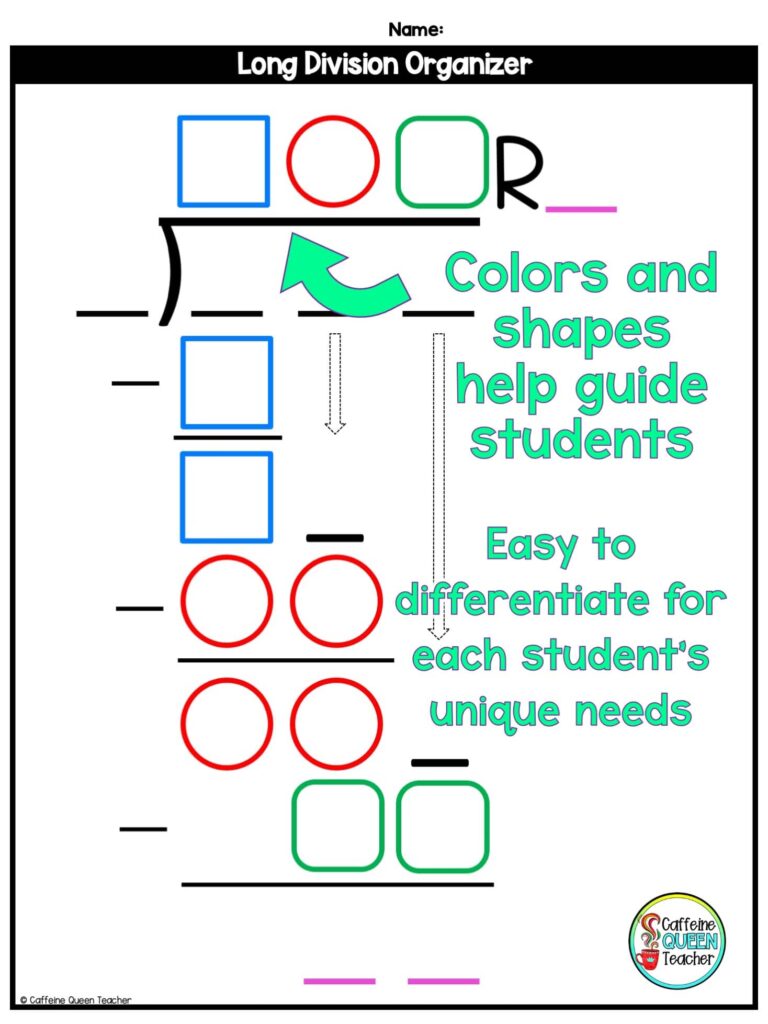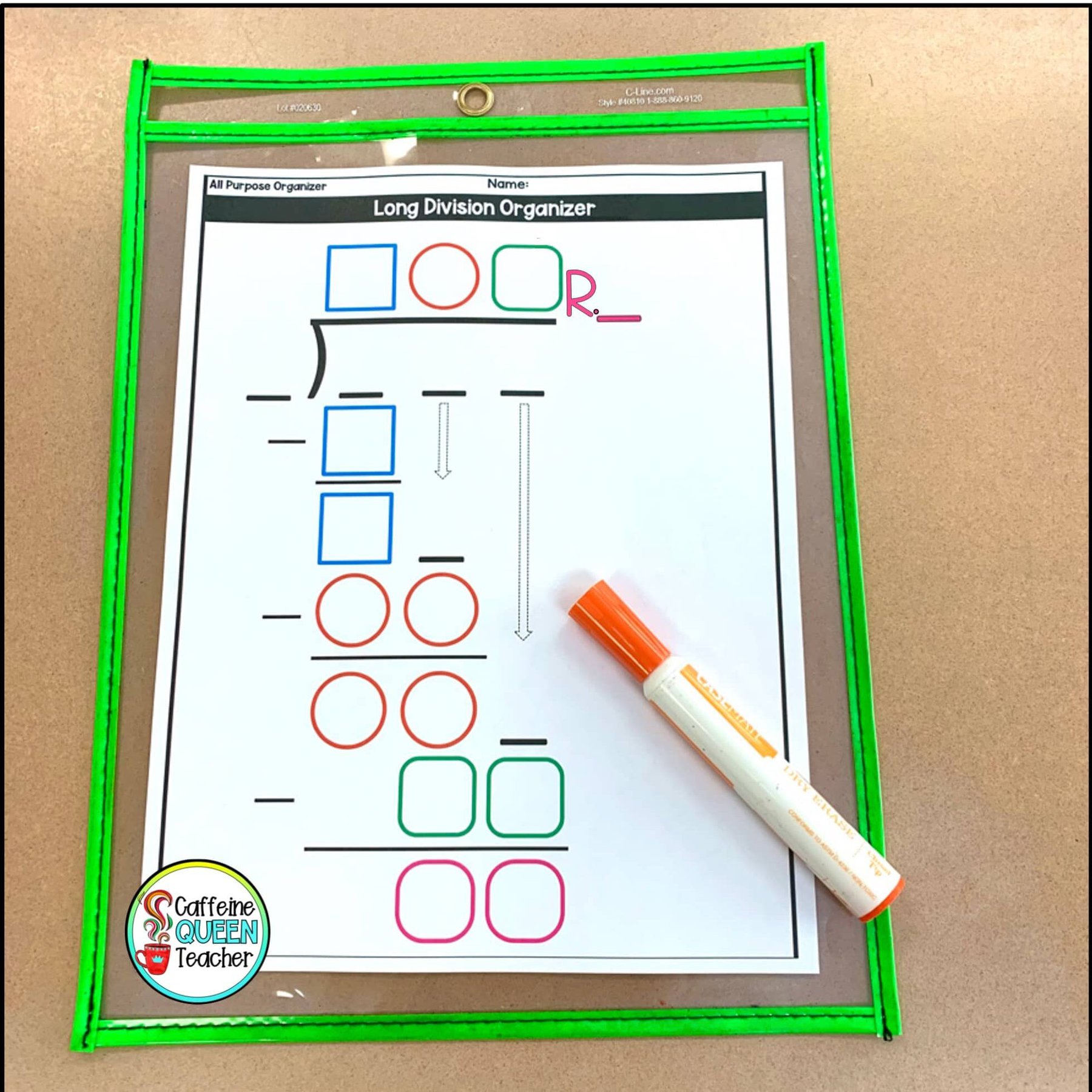Here are nine top tips for teaching the traditional long division standard algorithm. You’ll find practical yet simple ideas that teachers and parents can use today with their students.
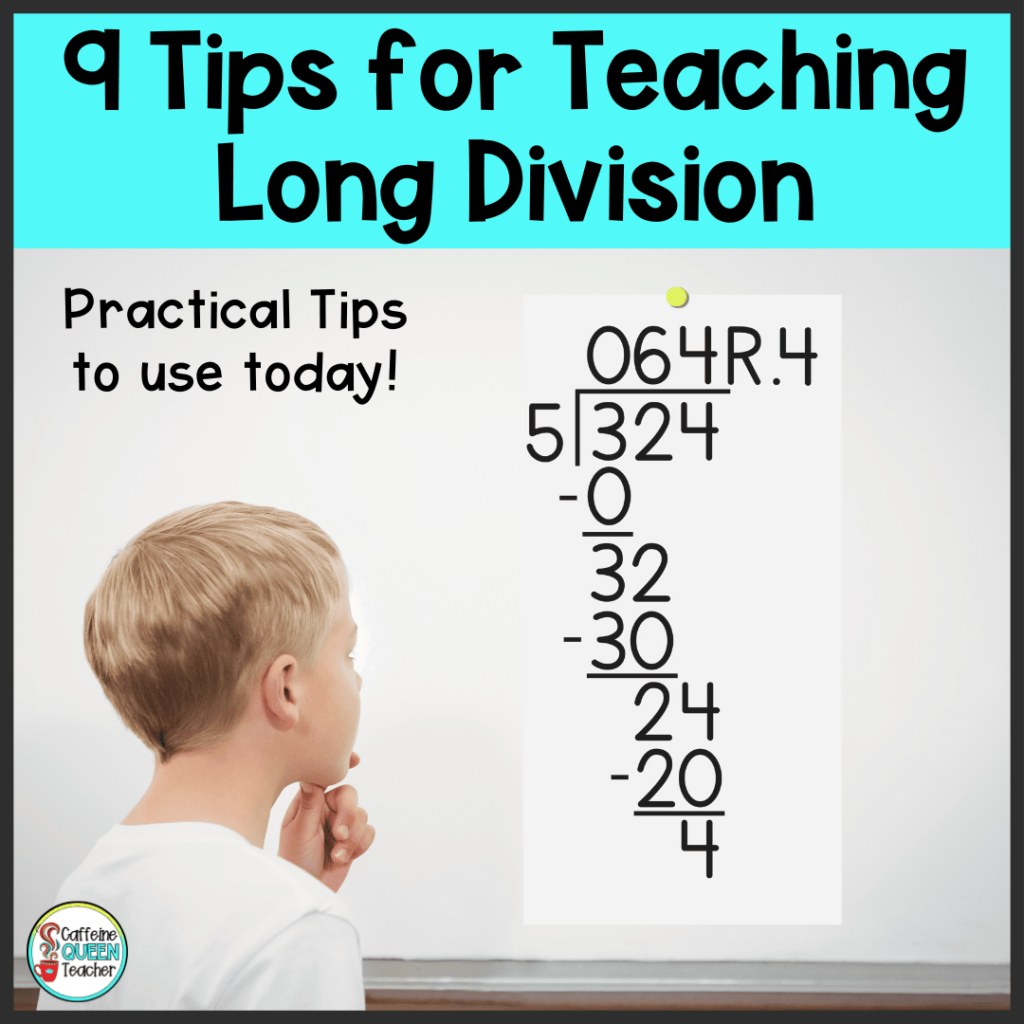
The problem with long division.
Before jumping into the tips, we must understand why students struggle with long division.
The standard algorithm for long division is difficult. There’s no doubt about it. Long division is tricky because there are so many steps, and students must complete them in exactly the right order.
In addition, many students aren’t fluent in multiplication facts. Therefore, they must stop to look up facts on a multiplication chart. At that point, they’ve lost the flow of the long division problem and forgotten what step they’re on. That brings on frustration and confusion.
Even students who have memorized multiplication facts forget the sequence of steps in long division. They complete one step and aren’t sure what comes next. It’s a long, complex process.
If you need a refresher on how to teach long division, check out this blog article for a refresher on how to solve long division problems using the standard algorithm – also known as the old-fashioned way of traditional long division.
Then return here for tips on breaking down the problems even more.
These valuable tips, plus practice and repetition, will help students learn the long division process.
1. Use an organizer to break down long division problems visually.
For students struggling with long division, organizers can help them visualize how to solve the problem. An organizer is a visual representation of the steps needed to complete a task. It helps students see the process of solving problems.
An organizer is helpful because it provides visual guidance and nudges students in the right direction when they’re stuck. As a result, the whole progression appears more logical.
You can make your own organizer or find some excellent premade organizers to save time.
2. A sticky note is your friend.
Sticky notes can be used as reminders and references for students.

They can also “hide” parts of problems and keep attention focused where it needs to be. Additionally, I’ve used them to cover problems that make the worksheet feel overwhelming.
3. Highlight trouble areas and write helpful symbols.
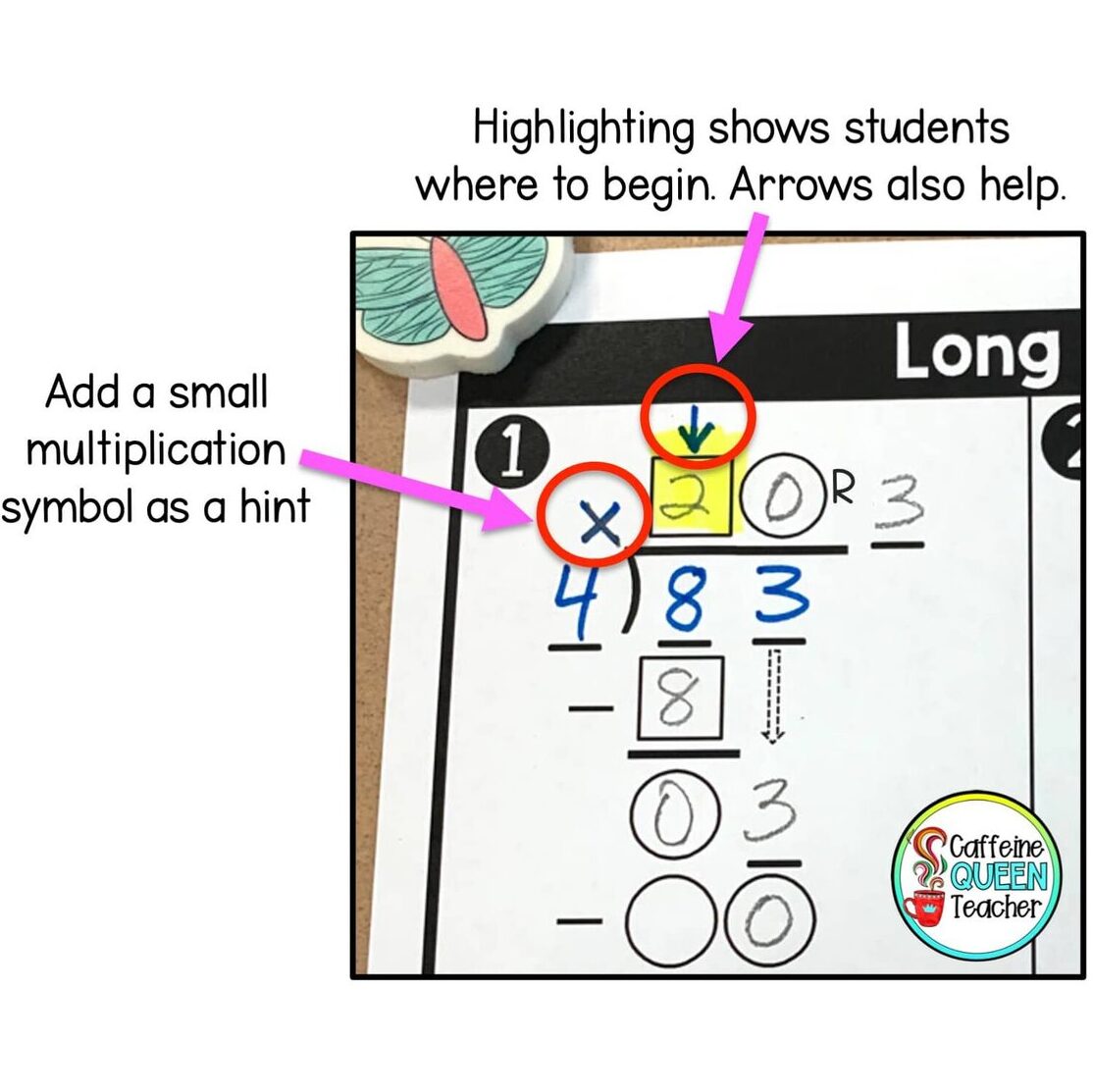
Use a highlighter to remind students where to begin. You can also highlight any steps that are troublesome to each student. I frequently use highlighters and colored markers as visual cues for students.
In the image above, you can see where I added an arrow indicating where to start. I also like to add an “x” multiplication symbol to remind students they need to multiply the divisor and the digits of the quotient.
4. Enlarge the size of the problems.
Enlarging the problem’s size can make it look more manageable by reducing the visual clutter. You can print worksheets and copies larger with the print settings (for worksheets online) or by the copy machine settings.
By the way, the organizers in my Shaped Math Long Division set come in various sizes. I like to print the largest organizer template in color and put it in a dry-erase sleeve (or page protector), like in the image above. Page protectors work well for this also as a less expensive alternative.
5. Use anchor charts, posters, and reference cards.
Use classroom walls, binders, notebooks, and even students’ desks for reference cards and posters. If you’re looking for reference cards for students, check these out at TPT.
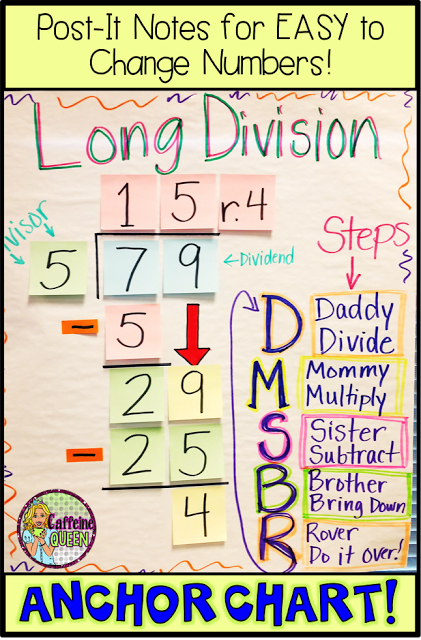
6. Check with students often for help and feedback.
Frequent check-ins are a must when teaching long division. You can do this in several ways.
First, you can give students a partner or use the Turn and Talk technique. You can provide students with a problem to solve. Allow ample time, then ask them to turn to a seatmate or nearby peer and talk through the problem. That way, they can receive help and feedback from their peers while you’re working with other students.
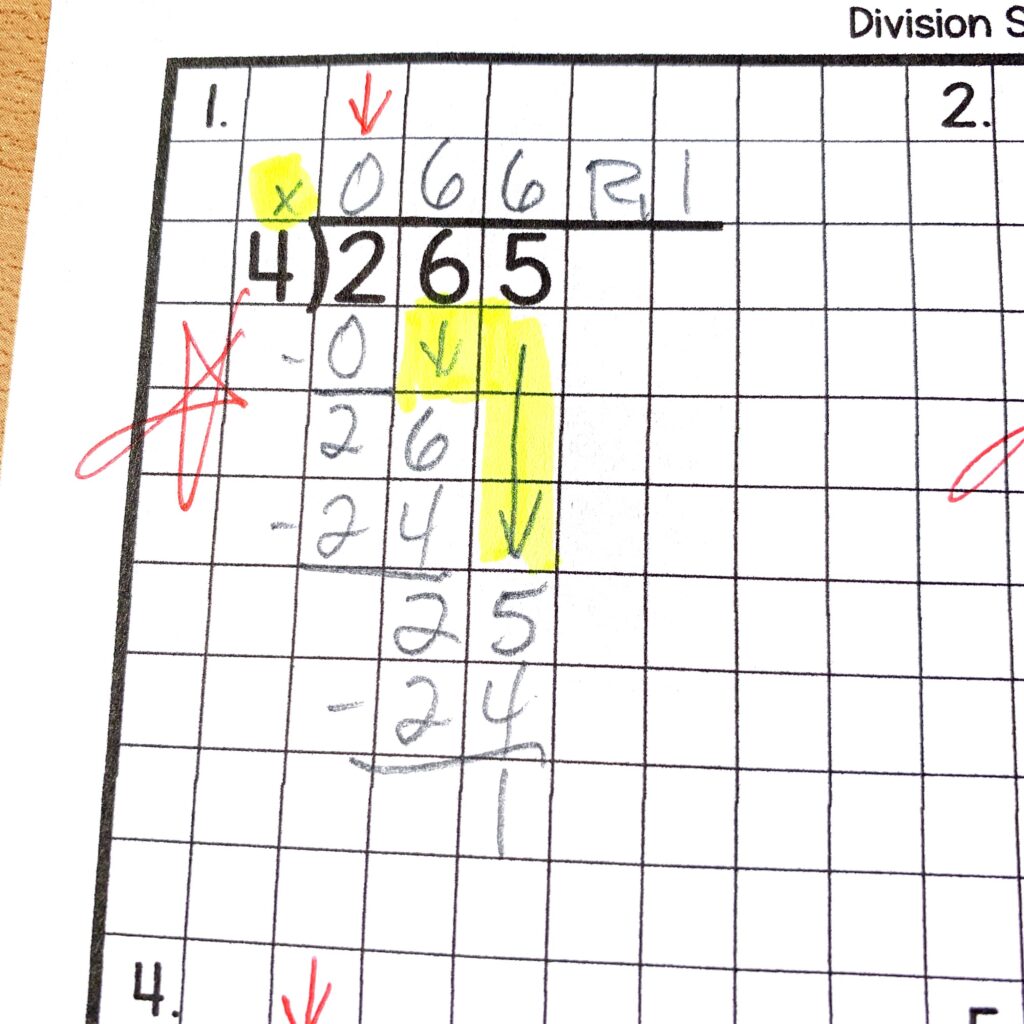
Something I frequently used in my classroom was what I called “Do 3, then bring it to me.” That technique worked well with worksheets or task cards. First, I’d quickly check the problems and put a star on the correct ones. Then, I’d ask students to work on the ones without stars.
It also works better with a smaller group of students, so you don’t get overloaded. I would also tell students to keep working until it was their turn to meet with me.
7. Try a pneumonic device.
These are oldies but goodies:
There’s the McDonald’s pneumonic device:
- Does (Divide)
- McDonald’s (Multiply),
- Serve (Subtract),
- Cheese (Check),
- Burgers (Bring down),
- Really? (Repeat and start over).
There’s also the Division Family, but families can look very different, so use what you feel is best for your situation.
- Daddy, (Divide)
- Mommy (Multiply),
- Sister (Subtract),
- Brother (Bring Down),
- Rover (Repeat and start over).
8. Out of sight, out of mind.
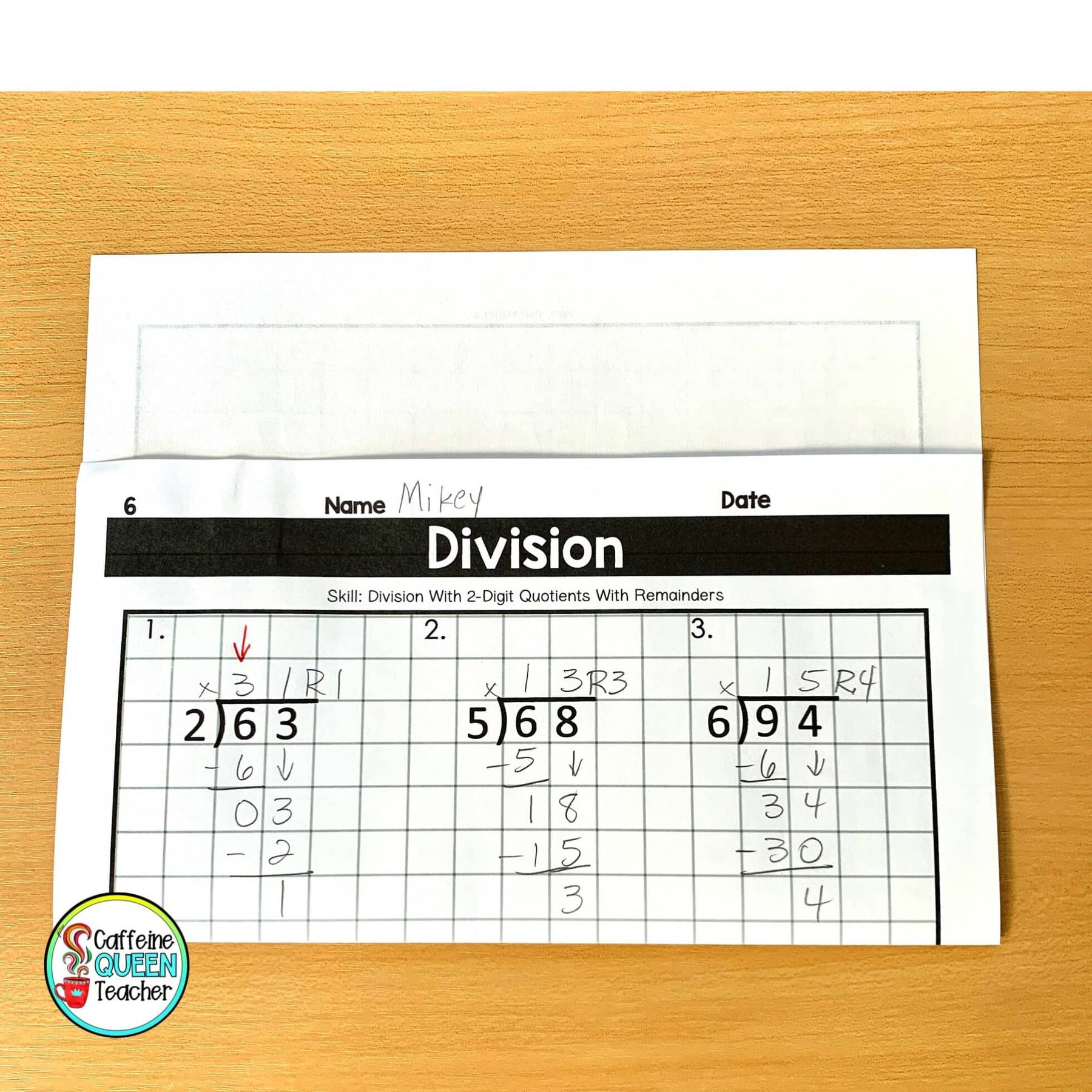
Folding the paper is a simple yet effective way to reduce visual clutter and overwhelm for students. This works well if your student becomes stressed by the number of problems on a page or tells you there are too many problems to do.
9. Try Graph Paper.
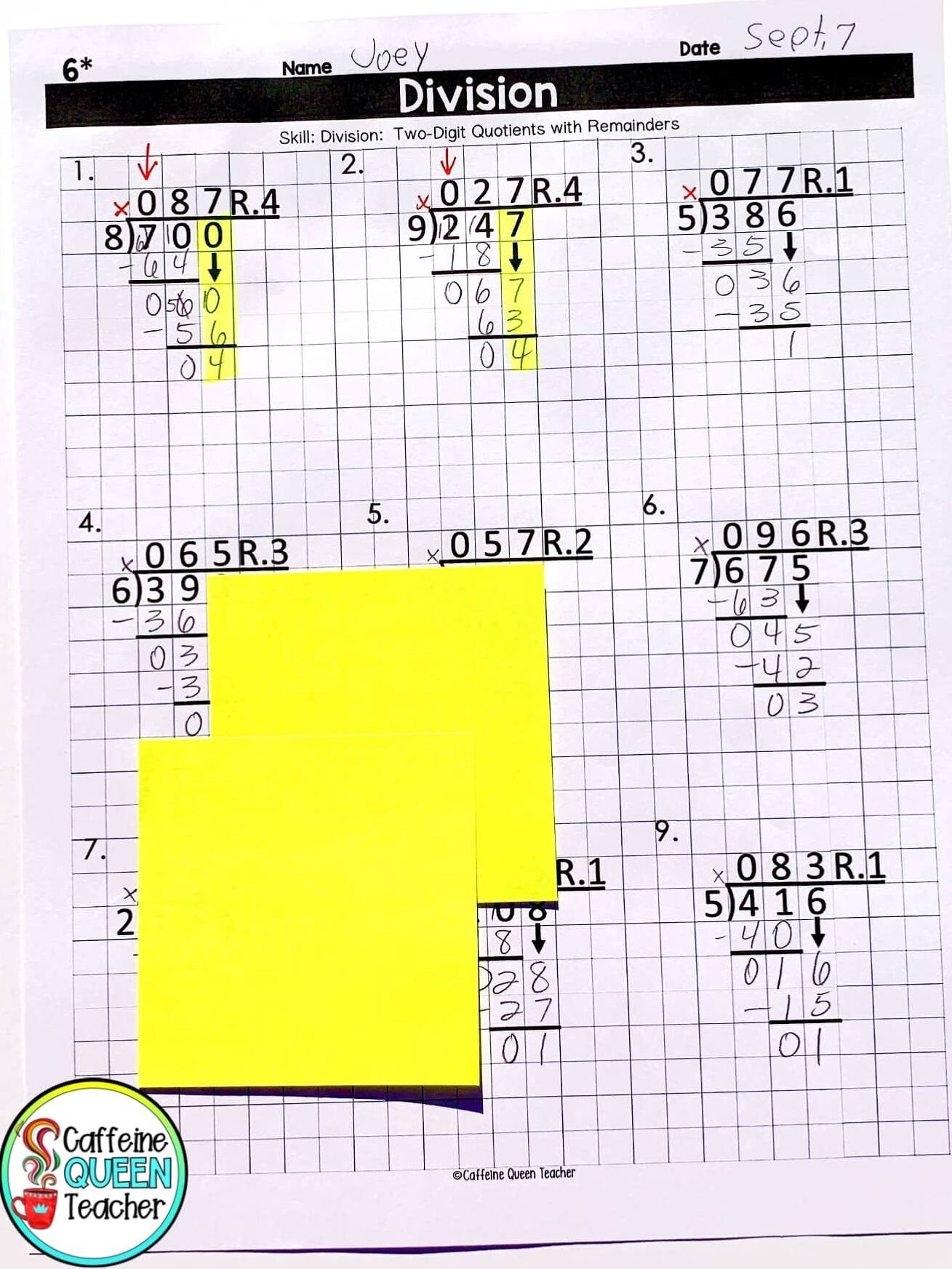
I’m sure you know that keeping numbers lined up and legible is critical to success in long division. Graph paper keeps students’ handwriting neat and their columns and numbers lined up as they work. You can adjust the size of the grids to fit your students’ needs.
Some final thoughts on scaffolding and differentiation.
Remember, as students learn and become comfortable with long division, you can gradually fade out these scaffolding tips.
Here’s a great article if you’d like to read more about Scaffolding and Differentiation.
Want to try some FREE long-division worksheets?
Click RIGHT HERE or on the photo above to download two FREE worksheets. You’ll receive a long division organizer worksheet and a long division on graph paper worksheet. Neither worksheet has any remainders. They’re absolutely FREE to try!
More Articles about Long Division:
- Differentiated Long Division Worksheets for FREE – Grab these differentiated long division worksheets for FREE and dramatically boost student success and your teaching success!
- How to Teach Multi-Digit Multiplication and Long Division – This blog article will introduce you to my differentiated multiplication and long division resources. Plus, you’ll learn exactly how I use them in my classroom.
Differentiated Long Division Resources:
- Long Division Differentiated Worksheets and Organizers – Visit Teachers Pay Teachers to see the complete set of organizers and worksheets included in the original kit.
- All Division Resources – Check out all the multiplication resources I offer in my Teachers Pay Teachers store.
- 2-Digit Divisors Long Division Differentiated Worksheets and Organizers – When you get ready to move on to 2-digit divisors, this is the perfect resource to promote long division learning with your students.







